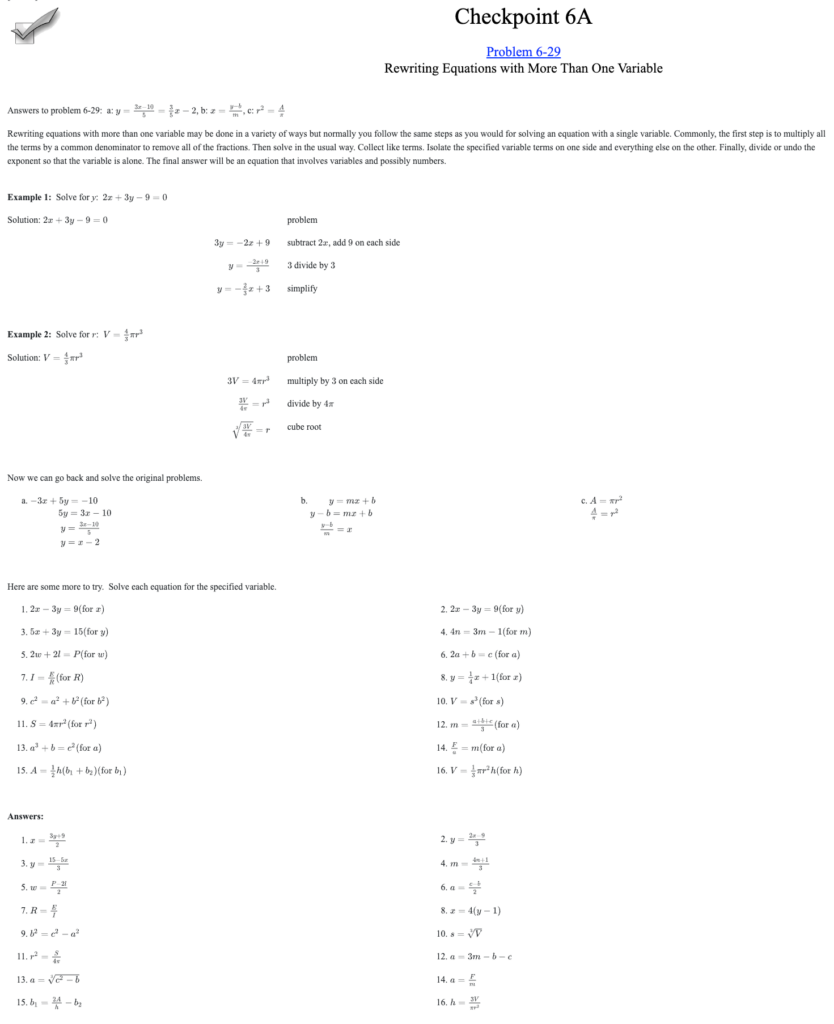John Hayes, Eagle River, WI johnhayes@cpm.org
Study Team and Teaching Strategies can support and serve several different purposes. These strategies support active learning–not only through movement and engagement, but also through promoting shared math authority. They are also vehicles to support collaborative learning. Students learn how to verbally justify their reasoning with structured, goal-centered strategies. An overlooked purpose of Study Team and Teaching Strategies is their connection to the NCTM’s Standards for Mathematical Practice. Teachers can purposefully choose a strategy to target one or more practices. In particular, if a teacher or co-teacher is aware of a practice that is a barrier for students, they can mindfully plan for strategies that may support growth with that practice.
Let’s look at an example. A teacher’s comfort level with a lesson’s mathematics is usually superior to their students; this is not always the case, but it could be if teachers worked the problems before they expect students to. One of the reasons for a teacher’s superior math ability is that they are able to quickly identify and determine solution paths for problems based on the structures they recognize. Suppose that a teacher is supporting a student who struggles with determining structures (Standard for Math Practice 7). In this case it is a good idea to plan for strategies that will support all students with this struggle. In other words, if there is one student that struggles with this practice, we might assume that there are more students who could benefit from this same strategy. That teacher can plan to use the I Have Who Has strategy to help that student recognize structures.
Who has a method for solving systems of equations when both equations are in standard form?
I have elimination, who has….
Another strategy that might help students make sense of structures is the Fortune Cookie strategy.
One way to solve this system might be to….
Let’s look at one more example. Suppose that a co-teacher recognizes that some of the students he supports are struggling with written justification on their assessments (Standard for Math Practice 3). While co-planning, the teacher recommends a Huddle during a key point of the lesson to explain that he wants elbow partners to use a Silent Debate. The Huddle will be used to outline the expectations for the Silent Debate where students will debate which solution method is better: Elimination or Substitution. To close the lesson, the teacher recommends that the students use a Pairs Check to explain how to use the method they argued for in the Silent Debate on a particular system. In this second example, rather than relying on remediation, the co-teacher has connected a learning barrier to Standard for Math Practice and then intentionally planned a STTS to support that practice.
Below are examples of Study Team and Teaching Strategies that may be connected to a given practice. I encourage you to make your own connections with the strategies you are most comfortable with in order to be purposeful in your planning process. In your eBook you will find connections to the Standards for Mathematical Practice in each Study Team and Teaching Strategy description under the Strategies Tab.
| SMP 1 | SMP 2 | SMP 3 | SMP 4 | SMP 5 | SMP 6 | SMP 7 | SMP 8 | |
|---|---|---|---|---|---|---|---|---|
| Peer Edit | ? | ? | ||||||
| Fishbowl | ? | ? | ||||||
| Gallery Walk | ? | ? | ||||||
| Hot Potato | ? | ? | ? | |||||
| Hot Seat | ? | ? | ? | |||||
| Huddle | ? | ? | ||||||
| Players-Coach | ? | ? | ? | ? | ||||
| Board Report | ? | ? | ? |


